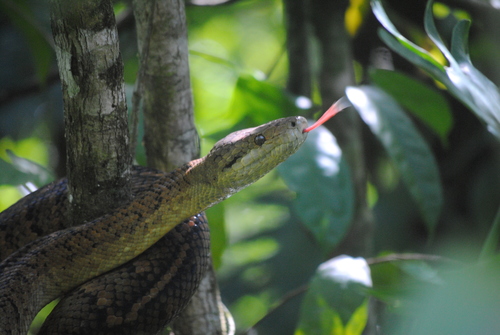
Jamaican Boa
The Jamaican boa, Chilabothrus subflavus, dazzles with its vibrant yellow-brown pattern. Nocturnal and arboreal, it gracefully maneuvers through Jamaican forests, crucially balancing ecosystems by preying on rodents. A symbol of the island's unique biodiversity, this snake thrives in limestone-rich habitats, embodying Jamaica's natural splendor.
20 years
Lifespan
Length: 1.2192 - 2.286 m
Size
Grey, Yellow, Fawn, Black, Orange
Color
Low
Aggression
Vulnerable
Conservation Status
Decreasing
Population Trend
Characteristics
Chilabothrus subflavus, commonly known as the Jamaican boa, is a large, non-venomous snake native to Jamaica. It features a striking coloration with a yellowish-brown body and dark markings. This species is nocturnal, arboreal, and plays a critical role in controlling rodent populations. It primarily inhabits forests and limestone regions.
Distribution Range of the Jamaican Boa
Jamaica
Jamaican Boa's Habitat
Environmental Conditions
Chilabothrus subflavus, commonly known as the Jamaican boa or yellow snake, is found in a variety of habitats within Jamaica. These include tropical and subtropical moist broadleaf forests, limestone forests, and wet limestone scrub forests. The climate in these areas is typically warm and humid, with a distinct wet season.
Ecological Niche
This species is a terrestrial and arboreal snake, meaning it inhabits both ground-level and tree environments. It plays a crucial role in the ecosystem as a predator, primarily feeding on small mammals, birds, and lizards. The Jamaican boa is known for its ability to adapt to different forested environments, including disturbed areas, which aids in its survival despite habitat changes.
Copyright @ Nature Style Limited. All Rights Reserved.
 English
English